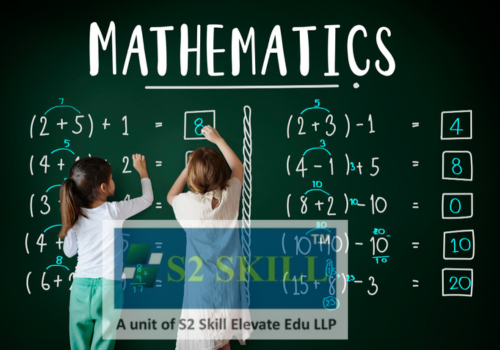When we think of early childhood learning, we often picture children reciting the alphabet or learning to read. Yet, one of the most powerful drivers of brain growth during these formative years is mathematical learning. Early math skills—like counting, recognizing patterns, and understanding quantities—don’t just prepare children for school success; they play a vital role in shaping how the brain develops and functions.

The Early Years: A Critical Period for Brain Growth
From birth to age six, a child’s brain undergoes rapid development. During this period, neural connections—also known as synapses—are formed at astonishing rates. These connections create the foundation for all future learning, and experiences during these years determine which pathways are strengthened and which fade away.
Mathematical experiences, even simple ones, stimulate multiple regions of the brain simultaneously. When a toddler counts their toys or compares which bowl has more cereal, they are engaging in activities that require attention, memory, spatial reasoning, and problem-solving. These cognitive processes, in turn, enhance neural connectivity across the prefrontal cortex, parietal lobes, and other key brain regions associated with reasoning and executive function.
How Math Shapes Cognitive Skills
Early math learning is not just about numbers—it’s about building a way of thinking. Studies have shown that children who develop strong number sense early on also perform better in reading and overall academic achievement later in life. This is because mathematical thinking involves skills such as sequencing, logical reasoning, and pattern recognition, which are transferable to many other areas of learning.
For example:
- Counting and number recognition help children understand order and structure, fundamental concepts for both math and language.
- Pattern recognition strengthens memory and the ability to predict outcomes—skills vital for problem-solving.
- Spatial reasoning, developed through puzzles or building blocks, enhances visual and motor coordination, as well as abstract thinking.
Neuroscientists have found that math learning activates the intraparietal sulcus, a brain region involved in processing numbers and spatial information. Strengthening this area early in life not only improves mathematical ability but also supports broader cognitive control and attention.

The Brain-Math Connection: What Research Shows
Recent advances in brain imaging have allowed scientists to observe how children’s brains respond to mathematical tasks. Functional MRI (fMRI) studies reveal that children who engage in frequent math activities show stronger activation in areas responsible for working memory and reasoning. These findings suggest that early exposure to math helps the brain form more efficient networks for problem-solving.
Moreover, researchers at Stanford University discovered that children with better math performance in early grades tend to have more synchronized brain activity in regions linked to number processing. This synchronization allows for faster communication between brain regions, leading to improved comprehension and learning efficiency.
In essence, early math doesn’t just “teach” numbers—it builds the architecture for how the brain thinks and learns.
Math as a Language for the Brain
It’s fascinating to think of math as a universal language that the brain understands even before formal education begins. Babies as young as six months can differentiate between quantities, demonstrating what scientists call an “approximate number sense.” This innate ability provides a natural foundation on which formal math skills can be built.
When caregivers and educators nurture this early number sense—by counting aloud, comparing objects, or discussing sizes and shapes—they help strengthen the brain’s neural circuits for quantitative thinking. The more these circuits are used, the stronger they become, just like muscles exercised through regular training.
Building a Brain-Boosting Math Environment
Encouraging early math skills doesn’t require complex tools or lessons. Everyday interactions offer countless opportunities for mathematical learning:
- Count fruits while grocery shopping.
- Sort toys by color, shape, or size.
- Discuss time during daily routines (“We’ll go to the park in 10 minutes”).
- Explore patterns in nature, music, or art.
These simple activities activate a child’s curiosity, promote problem-solving, and—most importantly—stimulate brain development in meaningful ways.

Conclusion: Investing in the Brain’s Future
Early math learning is far more than a school readiness skill; it’s a catalyst for lifelong cognitive growth. By engaging children in mathematical thinking from the earliest years, we are not only teaching them numbers but also shaping how their brains process information, solve problems, and adapt to new challenges.
As research continues to uncover the intricate links between math and the brain, one thing is clear: nurturing early math skills is one of the most effective investments we can make in a child’s future development—intellectually, emotionally, and neurologically. In the end, math is not just about equations; it’s about building strong, flexible, and powerful minds.




